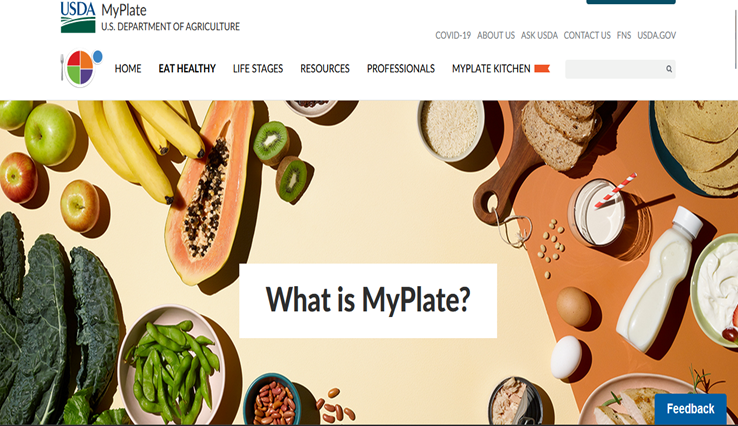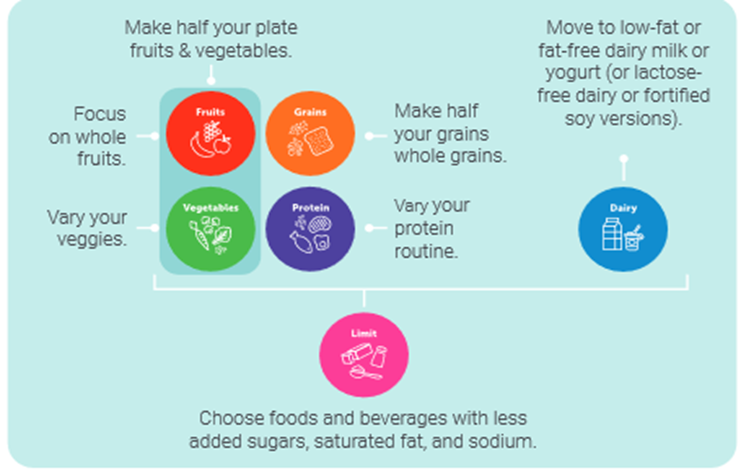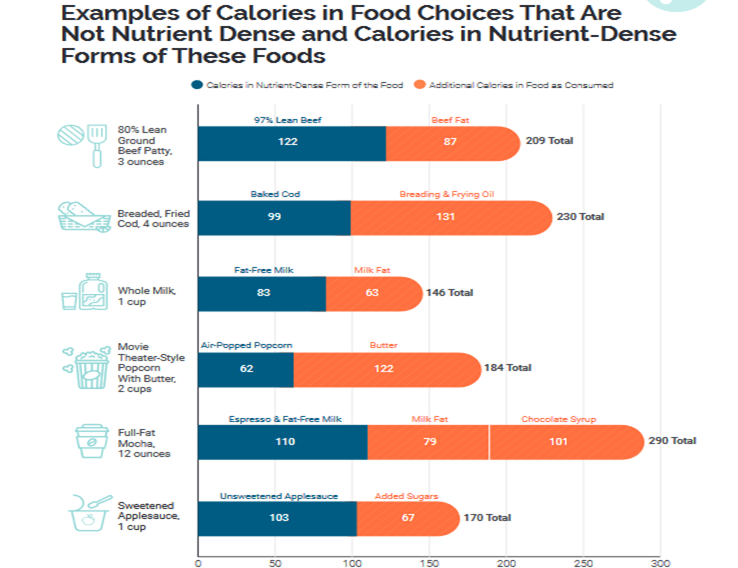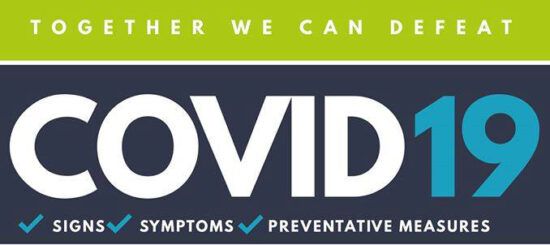Health & WellBEING
Health and wellbeing


Your diet really matters
What we consume as foods have a profound impact on our health. The scientific connection between food and health has been well documented for many decades, with substantial and increasingly robust evidence showing that a healthy lifestyle—including following a healthy dietary pattern— can help people achieve and maintain good health and reduce the risk of chronic diseases throughout all stages of the lifespan: infancy and toddlerhood, childhood and adolescence, adulthood, pregnancy and lactation, and older adulthood.
The core elements of a healthy dietary pattern are remarkably consistent across the lifespan and across health outcomes. Since the first edition of the Dietary Guidelines for Americans was published in 1980, it has provided science-based advice on what to eat and drink to promote health, reduce risk of chronic disease, and meet nutrient needs.
The publication of the Dietary Guidelines is required under the 1990 National Nutrition Monitoring and Related Research Act, which states that at least every 5 years, the U.S. Departments of Agriculture (USDA) and of Health and Human Services (HHS) must jointly publish a report containing nutritional and dietary information and guidelines for the general public. The statute (Public Law 101-445, 7 United States Code 5341 et seq.) requires that the Dietary Guidelines be based on the preponderance of current scientific and medical knowledge.
The 2020-2025 edition of the Dietary Guidelines builds from the 2015 edition, with revisions grounded in the Scientific Report of the 2020 Dietary Guidelines Advisory Committee and consideration of Federal agency and public comments.
The aim of the Dietary Guidelines is to promote health and prevent disease. Because of this public health orientation, the Dietary Guidelines is not intended to contain clinical guidelines for treating chronic diseases.
The body of scientific evidence on diet and health reviewed to inform the Dietary Guidelines is representative of the U.S. population—it includes people who are healthy, people at risk for diet-related chronic conditions and diseases, such as cardiovascular disease, type 2 diabetes, and obesity, and some people who are living with one or more of these diet-related chronic illnesses.
According to the Dietary Guideline, more than half of adults have one or more diet-related chronic disease. Researchers and public health experts, including registered dietitians, understand that nutrients and foods are not consumed in isolation. Rather, people consume them in various combinations over time—a dietary pattern—and these foods and beverages act synergistically to affect health.
At every life stage—infancy, toddlerhood, childhood, adolescence, adulthood, pregnancy, lactation, and older adulthood—it is never too early or too late to eat healthfully.
The dietary guidelines recommend that for about the first 6 months of life, infants should be fed exclusively human milk through at least the first year of life, and longer if desired. Infants should be fed iron-fortified infant formula during the first year of life when human milk is unavailable. Infants should also be fed with supplemental vitamin D beginning soon after birth.
At about 6 months, introduce infants to nutrient-dense complementary foods. Introduce infants to potentially allergenic foods along with other complementary foods. Encourage infants and toddlers to consume a variety of foods from all food groups. Include foods rich in iron and zinc, particularly for infants fed human milk.
From 12 months through older adulthood, follow a healthy dietary pattern across the lifespan to meet nutrient needs, help achieve a healthy body weight, and reduce the risk of chronic disease. A healthy dietary pattern which could include customize nutrient-dense food and beverage choices reflecting personal preferences, cultural traditions, and budgetary considerations, can benefit all individuals regardless of age, race, or ethnicity, or current health status.
An underlying premise of the Dietary Guidelines is that nutritional needs should be met primarily from foods and beverages—specifically, nutrient-dense foods and beverages. Nutrient-dense foods provide vitamins, minerals, and other health-promoting components and have no or little added sugars, saturated fat, and sodium.
A healthy dietary pattern consists of nutrient-dense forms of foods and beverages across all food groups, in recommended amounts, and within calorie limits. The core elements that make up a healthy dietary pattern include:
I. Vegetables of all types—dark green; red and orange; beans, peas, and lentils; starchy; and other vegetables
II. Fruits, especially whole fruit
III. Grains, at least half of which are whole grain
IV. Dairy, including fat-free or low-fat milk, yogurt, and cheese, and/or lactose-free versions and fortified soy beverages and yogurt as alternatives
V. Protein foods, including lean meats, poultry, and eggs; seafood; beans, peas, and lentils; and nuts, seeds, and soy products
VI. Oils, including vegetable oils and oils in food, such as seafood and nuts
Limit foods and beverages high in added sugars, saturated fat, and sodium, and limit alcoholic beverages. At every life stage a healthy dietary pattern doesn’t have much room for extra added sugars, saturated fat, or sodium—or for alcoholic beverages.
A small amount of added sugars, saturated fat, or sodium can be added to nutrient-dense foods and beverages to help meet food group recommendations, but foods and beverages high in these components should be limited as follows:
Ø Added sugars—Less than 10 percent of calories per day starting at age 2
Ø Avoid foods and beverages with added sugars for those younger than age 2
Ø Saturated fat—Less than 10 percent of calories per day starting at age 2
Ø Sodium—Less than 2,300 milligrams per day—and even less for children younger than age 14
Ø Alcoholic beverages—Adults of legal drinking age can choose not to drink, or to drink in moderation by limiting intake to 2 drinks or less in a day for men and 1 drink or less in a day for women, when alcohol is consumed. Drinking less is better for health than drinking more. There are some adults who should not drink alcohol, such as women who are pregnant.
The Dietary Guidelines for Americans is developed and written for a professional audience. Therefore, its translation into actionable consumer messages and resources is crucial to help individuals, families, and communities achieve healthy dietary patterns.
MyPlate is one example of consumer translation. Created to be used in various settings and adaptable to meeting personal preferences, cultural foodways, traditions, and budget needs.
MyPlate is used by professionals across sectors to help people become more aware of and informed about making healthy food and beverage choices over time.
Your diet really matters


USDA Dietary Guidelines
Foods that fight depression
Memory super foods
Whole Body Exercise
At Home Cardio Exercise
Need Help?
There are a number of available resources for those experiencing challenges during this season. Below you will find the ones we’ve identified:
- St. Mark AME Staff
Video Resources
Other Resources
Contact Us
Complete the form below, and we will connect with you:





